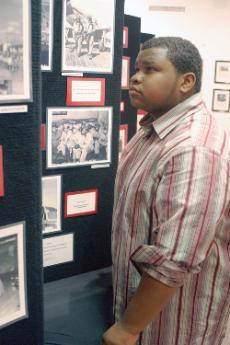Throughout the past month, the African American Cultural Center displayed an exhibit about the Tuskegee Airmen, who became America’s first black military airmen in World War II.
While the exhibit has been on display at various military bases and high schools, N.C. State is the first university to which the exhibit has traveled.
“It’s nice to be a first,” Fred Hord, director of AACC, said. “This kind of exhibit is consistent with [the AACC] objective — to have an academic emphasis on the center.”
The exhibit, which is on the second floor of Witherspoon Student Center, presents pictures of Tuskegee Airmen, as well as display boards with information about their experiences.
The Tuskegee Airmen enlisted at a time when there were many Americans who thought black men lacked intelligence, skill, courage and patriotism, according to the Tuskegee Airmen Web site.
“These were Air Force American pilots who were very, very successful in flight in aviation,” Lavonne-De Driver, creator of the exhibit, said. “They were considered to be failures at flying, but they succeeded, and no one can conquer the types of records they did during World War II.”
Driver, the wife of Dr. John H. Driver, a Tuskegee Airman who passed away March 4, created this exhibit, which has traveled around the nation for the past four to five years.
The Web site said the Airmen trained to become aircraft and engine mechanics, armament specialists, radio repair technicians, parachute riggers, control tower operators, police officers and administrative clerks, along with gaining other skills necessary for them to fully function as an Army Air Corps flying squadron or ground support unit.
The black airmen who became single-engine or multi-engine pilots were trained at Tuskegee Army Air Field in Tuskegee, Al.
Driver said she started the exhibit in order to educate Americans about the social prejudices and racial discrimination the United States citizens presented during the time of the Tuskegee Airmen.
She gathered information from her husband’s experience as a Tuskegee Airman and exhibited it on display boards that traveled with her throughout North Carolina.
“It has a historical significance at a number of levels,” Hord said. “You’ve got a mixture of those guys of pride and who they were, loyalty to the country and pain. I’ve heard it 20 times from older people who fought in the Second World War in the Air Force that they were treated worse than German prisoners, and here they were putting their lives on the line.”
According to Driver, it is important for students to visit the exhibit because it is an important part of American history.
“[The Tuskegee Airmen] were so great and so successful; I think everybody who lives in this country should know the wrongness that was done to these men when they were trying to fight to defend this country,” Driver said. “For 30 years our country did not recognize [the Tuskegee Airmen], meaning that they never gave them credit for helping to win World War II.”
Hord said that the exhibit has significance at a regional level as well because some of men who are still alive from the Raleigh-Durham area were part of the 3,000 or more Tuskegee Airmen.
“[The exhibit] shows the kinds of things we were wrestling with as a country regarding race,” Hord said. “On a historical basis, if we’re going to try to correct things, we really need to know what was.”
According to a display board in the exhibit, 25 of the Tuskegee Airmen were from North Carolina.
“We hope that it will trigger [students for] some further thinking about that time period,” Hord said.
The Tuskegee Airmen received the Congressional Medal of Honor in Washington, D.C., Thursday.








